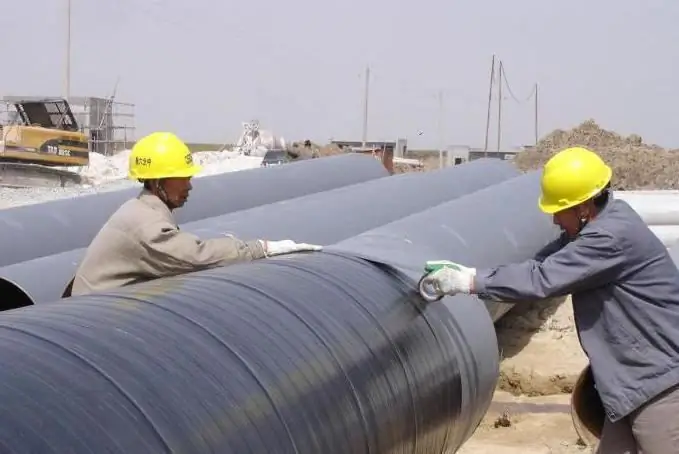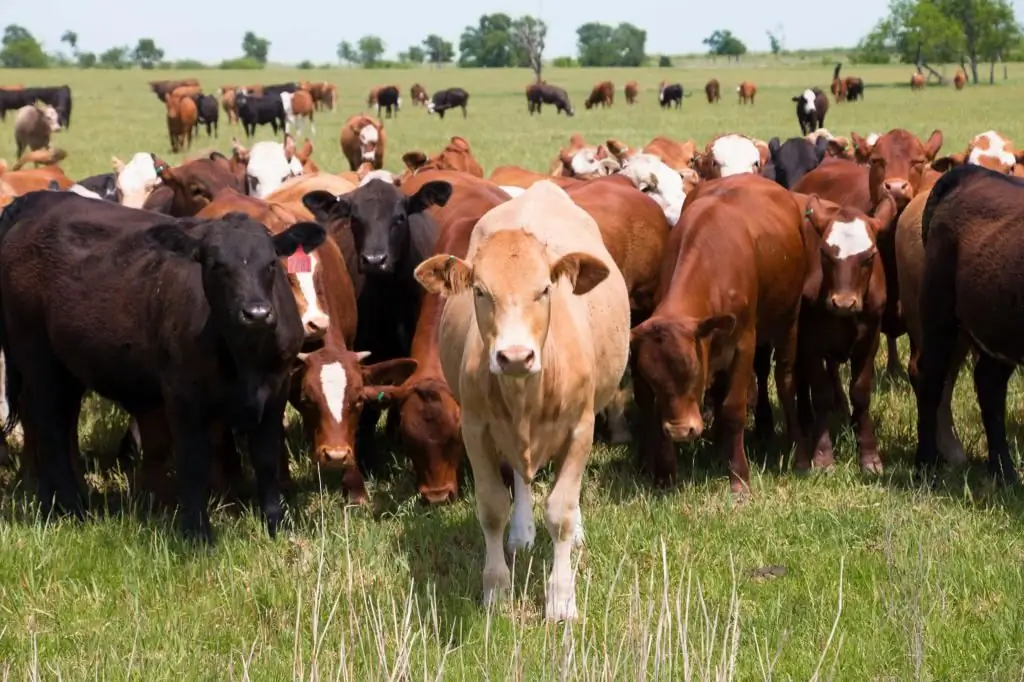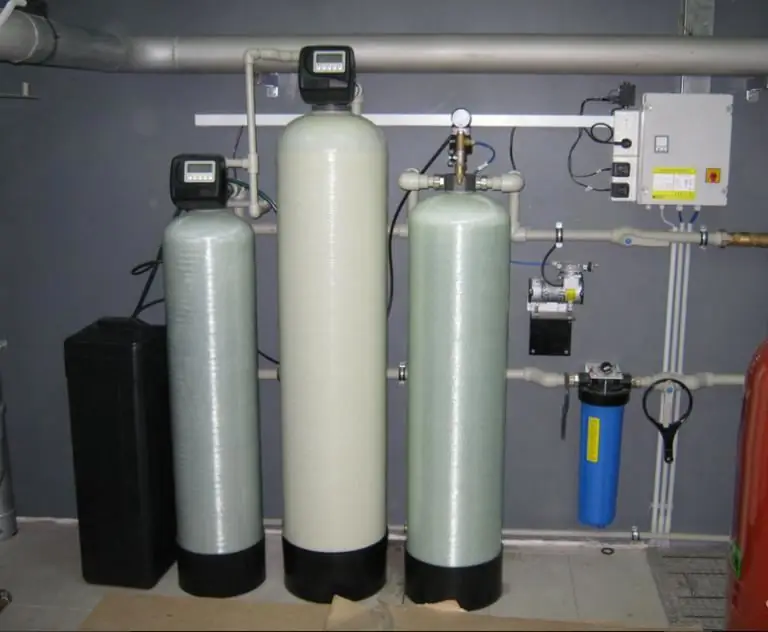2026 Author: Howard Calhoun | [email protected]. Last modified: 2025-01-24 13:10:39
Plant diseases are one of the main causes of crop loss both in quantitative and qualitative terms. Damage is caused by a number of phytopathogenic microorganisms, fungi, viruses, bacteria.
To combat plant diseases in agriculture, it is advisable to use fungicidal preparations. These are chemicals, a special type of pesticide that can fight pathogens of various crops.
Why are fungicides needed?
Fungicidal preparations for plants are used to:
- fight against disease during the formation and development of culture;
- increasing crop productivity and market attractiveness of fruits;
- increasing the shelf life of harvested fruits, vegetables, tubers and seeds;
- eliminate the risk of disease and poisoning in humans and animals that eat damaged plants.
The role of fungicides in disease management
Fungicides play an important role in a number of agrotechnical measures aimed at increasing the yield and quality of harvested fruits. In practice, they are able to adequately control the occurrence and development of plant diseases. At the same time, they slightly increase the cost of agriculturalcrops.

For maximum effectiveness, fungicidal preparations are applied before the onset of the disease or at the first appearance of symptoms. This is primarily due to the fact that damage from plant diseases is not compensated. Chemicals can only protect new uninfected areas.
Manufacturers use protective drugs at the level of minimum thresholds. As a rule, they are used for prevention, taking into account the forecasts of agronomists. This is done to reduce the cost of the final product, and therefore increase the profitability of the enterprise, as well as to protect the environment from exposure to chemicals.
Methods of use
Fungicides are available in powder, granule, gas or liquid form. They apply in the following cases:
1. Processing seeds, bulbs, seedlings. Procedures can be done both at the seed company and just before planting. Traditionally used:
- The drug "Fundazol". It is produced in the form of a powder, has a wide spectrum of action, the solution is prepared in the proportion: 1 g of the drug per 1 liter of water.
- Means "Fitosporin-M". Used to prevent fungal and bacterial diseases. Valuable because it has low toxicity, it is not dangerous for bees.

- The drug "Maxim-KS". Effectively used for dressing potato tubers before planting, as well as rhizomes of seedlings. Not poisonous toplants, birds and insects, low toxicity to humans. Since it is dangerous for fish, the drug should not be allowed to enter water bodies.
2. Pre-sowing tillage in furrows or holes, depending on the planting methods. As a rule, liquid fungicidal preparations are used for impregnation by drip irrigation or in the form of directed spraying around the base of the plant.
3. Treatment of foliage and other above-ground parts of plants with a sprayer. Small, hand-held implements can be used, as well as huge containers transported by tractors or air transport.
The following fungicides are used for processing:
- Pesticide "Topaz". Used for preventive purposes and as a treatment drug. Has a wide spectrum of action. It is toxic to insects, so the treatment of plants with this drug during the flowering period is prohibited. Hazard class - 3.
- Means "Vektra". The drug also prevents and simultaneously treats plants from many fungal diseases. Available as a solution in ampoules of 2 or 5 ml. Non-toxic to plants, slightly toxic to humans and animals, but highly toxic to bees. Therefore, during the flowering of plants, the drug is not used.
- The drug "HOM" (or "OxyHom"). Broad spectrum fungicide, highly effective and low toxicity. Allowed to use 3 weeks before harvest.

- Colloidal sulfur. Available in powder form. Effectively fights powdery mildew and scab. Non-toxic, therefore allowed to use a few days before harvest.
4. Tree injections through grafting.
5. Treatment of plants indoors. The chemical is released into the greenhouse air in gaseous form. Such agents are called "fumigants". This method is very effective in controlling pathogens, as the resulting smoke or fog completely envelops the plant and ensures that all areas of it are treated at the same time.
HCN, chloropicrin, dichloropropene, carbon disulfide, dibromoethane-1 are used for indoor areas.
For any type of treatment, it is rational to reuse fungicides no later than 5 days after the first dressing. This is due to the chemical effect of light, temperature on the preparation, as well as the erosive influence of natural factors such as rain, wind.
Types of fungicides and definitions
Fungicides are classified in several ways based on different characteristics:
1. mobility in the plant. Bidirectional chemicals have the best combination of efficiency and safety, which do not remain on the surface, but, being absorbed by the roots, move up the stem to the leaves and also move mobilely from the leaves to the roots.
2. Role in protection: preventive or curative.
3. Action perimeter: single site or multiple sites.
4. pharmacological impact. Fungicidal preparations are capable of killing fungi by damaging their cell membranes, inactivating enzymes or proteins critical for vital activity, interfering withkey processes such as energy production or respiration. Some newly developed products are unique in that they do not directly affect the pathogen itself. These defenses produce the so-called "acquired resistance system" (ATS) in the host plant. These SRLs induce chemical signals that activate specific defense mechanisms such as thickening of cell walls and the production of antifungal proteins. That is, the plant, as it were, receives immunity from pathogens.
5. Type of chemical composition: inorganic or organic. Many of the first fungicides had inorganic compounds based on sulfur ions or metals such as copper, tin, cadmium and mercury, which are toxic not only to fungi but also to the plants themselves. Copper and sulfur are still widely used.
Organic are those that contain carbon atoms in the structure of molecules of chemical compounds. Today, it is these fungicidal preparations that are mainly used. These products are non-toxic not only for flora, but also for insects, animals and people. They have a hazard class 4. They have a disastrous effect on pathogens, while maintaining the he alth of the agroecosystem.
Recommended:
Tread protection against corrosion. The main ways to protect pipelines from corrosion

Protective corrosion protection is a universal solution when it is required to increase the resistance of metal surfaces to moisture and other external factors
Cattle diseases: an overview of the most common diseases, causes, treatments

Cattle diseases are an important topic of modern veterinary medicine. Conditionally, all pathologies are divided into infectious and non-infectious. The most dangerous are ailments belonging to the first class, especially those that can spread to humans. Infection of even one animal is associated with the risk of losing an impressive percentage of the entire livestock
Nuclear power plants. Nuclear power plants of Ukraine. Nuclear power plants in Russia

Modern energy needs of mankind are growing at a gigantic pace. Its consumption for lighting cities, for industrial and other needs of the national economy is increasing. Accordingly, more and more soot from burning coal and fuel oil is emitted into the atmosphere, and the greenhouse effect increases. In addition, there has been more and more talk in recent years about the introduction of electric vehicles, which will also contribute to the increase in electricity consumption
The largest power plants in Russia: list, types and features. Geothermal power plants in Russia

Russia's power plants are scattered in most cities. Their total capacity is enough to provide energy for the entire country
Aeration plants: definition, types, principle of operation, production plants and do-it-yourself tips

Installation of the aeration column provides for the connection of a sump so that it has two flushing modes - direct and reverse. Combined use allows you to wash the filter element more efficiently. It is better to take a bigger mud trap. Small filters become clogged within a short time and require frequent rinsing. It is better to use a glass flask

